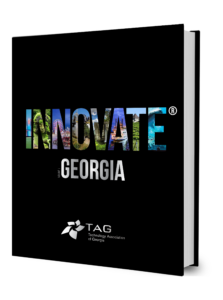Hermeus is an Atlanta-based aerospace startup on a mission to revolutionize air travel with hypersonic aircraft. These planes will fly five times the speed of sound – turning a seven-hour trip from New York to London into a short 90-minute flight. Traveling at these speeds effectively shrinks the size of the globe by making transoceanic routes feel regional.
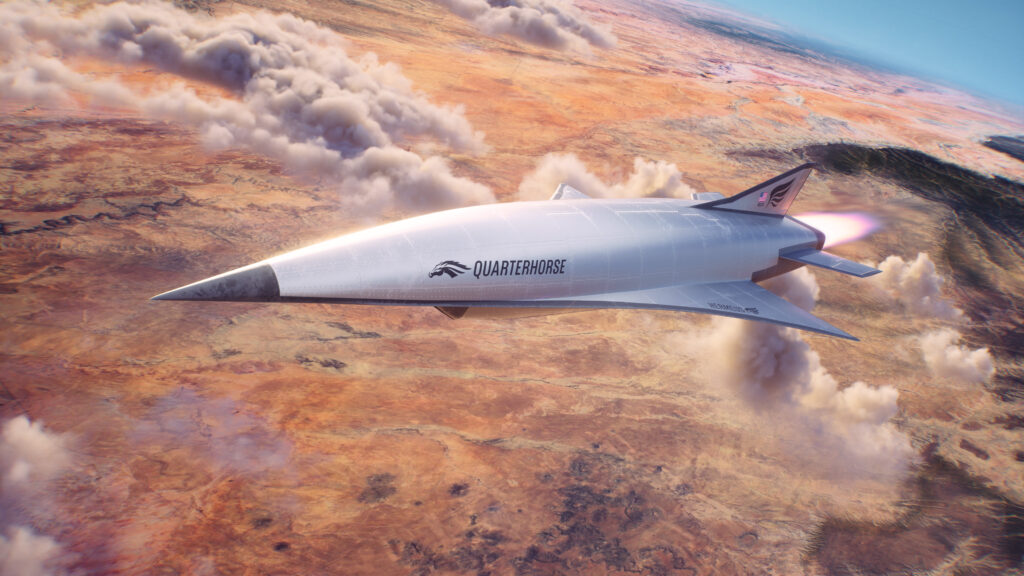
The company was founded in 2018 by four aerospace engineers eager for both a technical and entrepreneurial challenge. Having worked at NASA, SpaceX, and Blue Origin, they were well aware of the difficulties hypersonic technology posed, but also the revolutionary implications. Historically, accelerating transportation networks has resulted in massive economic and social growth – be it Rome building its road network, maritime shipping switching from sail to steam power, or China deploying high-speed rail. It is estimated that the new economic growth created by Mach 5 flight could increase global GDP by roughly $4 trillion per year by radically accelerating the speed of commerce and cultural exchange.
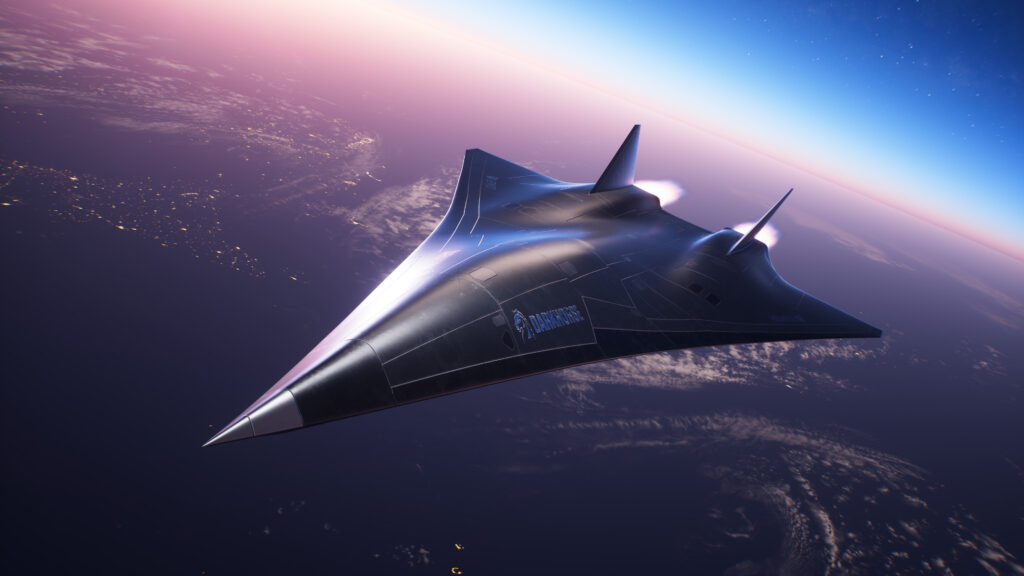
A Step Change in Defense Technology
In addition to commercial travel, Hermeus is working with the Air Force and other government organizations to develop uncrewed, high speed aircraft for defense and national security missions.
The first of these aircraft in development is called Quarterhorse – a single engine plane capable of reaching speeds of Mach 4 Quarterhorse will enable routine and affordable high-speed flight testing.
Following Quarterhorse is Darkhorse – a multi-mission, hypersonic aircraft designed to deliver unique asymmetric capabilities to the warfighter. Hypersonic aircraft represents a major step change in defense technology, offering unprecedented speed, altitude, and maneuverability.
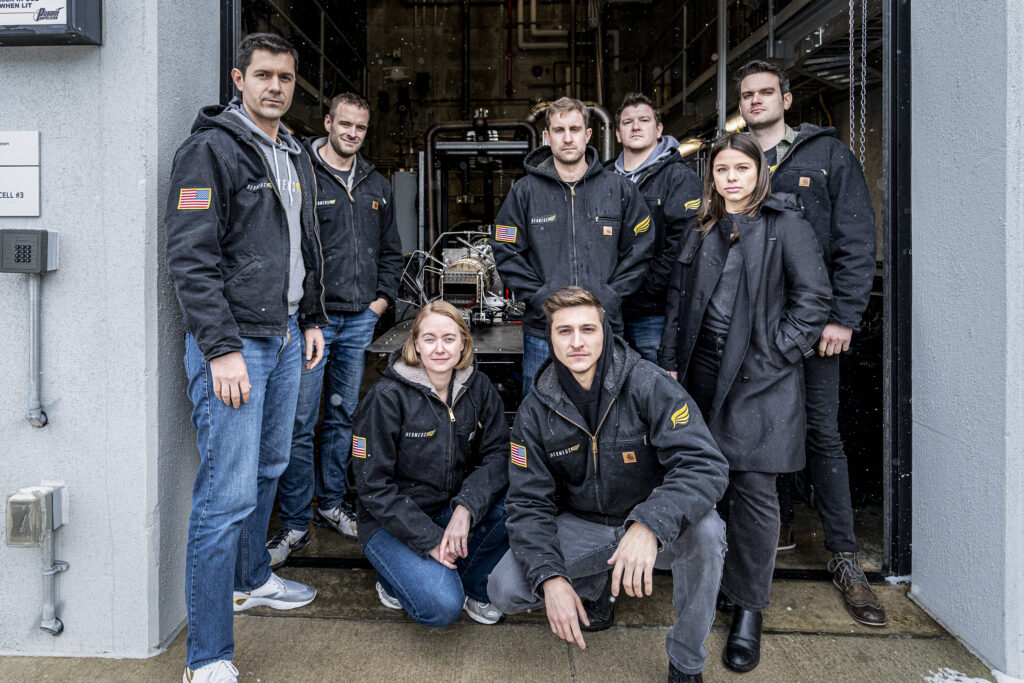
The Secret Sauce: A Hybrid Turbine / Ramjet Engine
From day one, Hermeus went to work on the core technology that will enable hypersonic flight: a turbine-based combined cycle (TBCC) engine. This unique technology has never been developed commercially.
Simply put, a TBCC is an engine that combines two different types of airbreathing propulsion – a turbine and a ramjet.
At low speeds the TBCC engine is in turbine mode – just like any jet aircraft. But as the temperature and the speed of the incoming air increase, turbines hit their performance limit. When this happens, a ramjet takes over and operates at higher speeds.
In 2022, Hermeus successfully demonstrated turbojet to ramjet mode transition within its TBCC engine named Chimera.
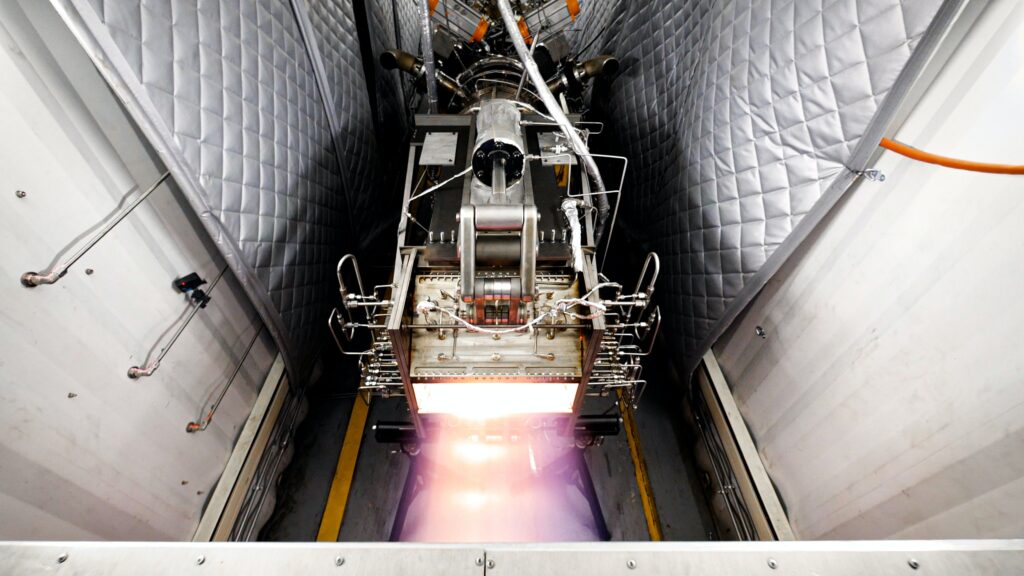
Testing took place at the Notre Dame Turbomachinery Laboratory which provided heated air to simulate high-Mach temperatures and pressures. The cost and speed at which the Hermeus team achieved this milestone is notable. Hermeus designed, built, and tested Chimera in 21 months for $18 million.
Most hypersonic platforms are powered by a rocket engine. But rockets are not rapidly reusable and are inherently more dangerous for passenger flight.
By making a full-range, air-breathing, hypersonic engine that does not require a rocket to accelerate, Hermeus is setting the stage for operational hypersonic flight. Moreover, this engine design accommodates existing transportation infrastructure – an additional benefit to implementing the technology.
Hermeus aircraft are designed to be operational at traditional airports. This is important not just for hypersonic testing, but critical to Hermeus’ goal of radically accelerating passenger travel through hypersonic flight.
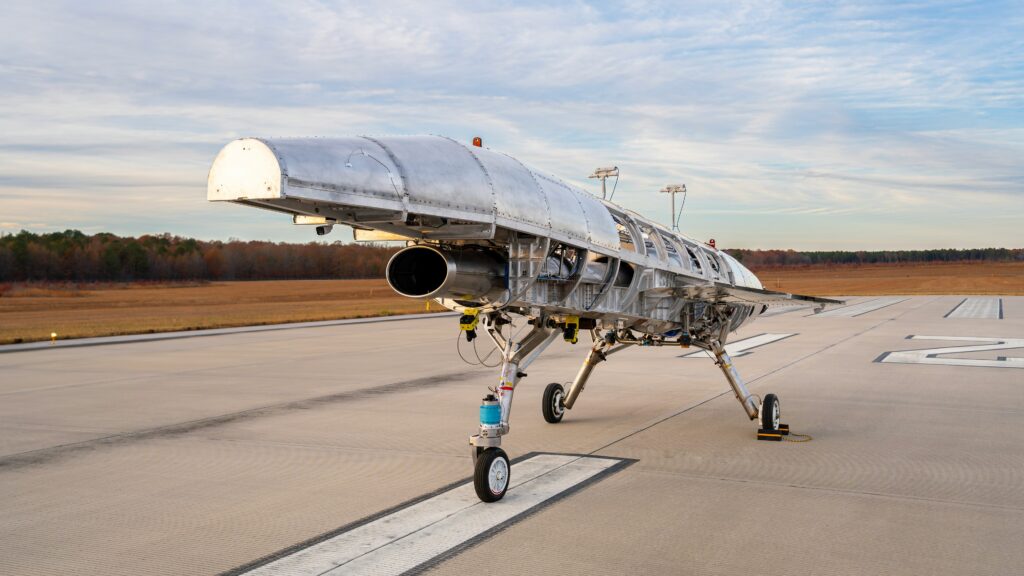
The first Quarterhorse vehicle is a non-flying prototype which acts as a ‘dynamic iron bird’ by validating all major aircraft subsystems and demonstrating remote command and control taxiing.
The second Quarterhorse is an uncrewed, remotely piloted aircraft powered by a GE J85 engine. Its primary mission is to demonstrate highspeed takeoff and landing. Flight tests will take place at Edwards Air Force Base.
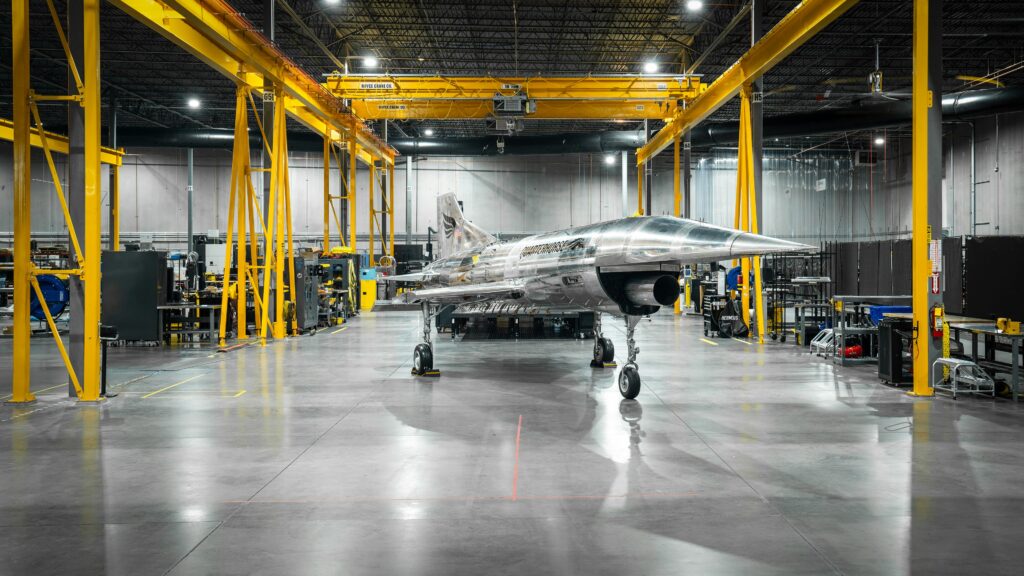
The third Quarterhorse aircraft will demonstrate supersonic speeds of Mach 2.5 and be followed by another capable of hitting Mach 4.
This iterative manufacturing approach has been proven successful in delivering massive improvements in the capabilities of rockets, satellites, and small drones. Now, Hermeus is bringing the power of iteration speed to aircraft. It’s a capability that is absolutely necessary for solving the challenges of operationalizing hypersonic aircraft.
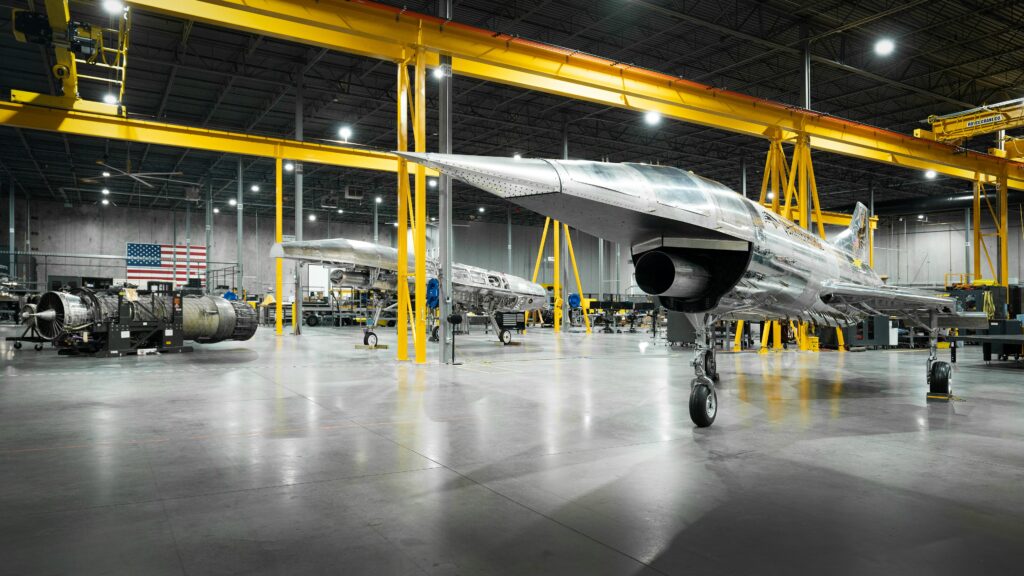
Manufacturing Aircraft Quickly and Cost-Effectively
A founding principle at Hermeus is the concept of rapid and iterative design. This engineering approach is demonstrated by the development of Quarterhorse.
Instead of building a single Quarterhorse capable at flying at Mach 4 speeds, Hermeus is building four. Each aircraft will progressively increase in complexity, building on the learnings of prior builds. This approach manages program risk across multiple vehicles and accelerates delivery of products and services to Hermeus’ customers.
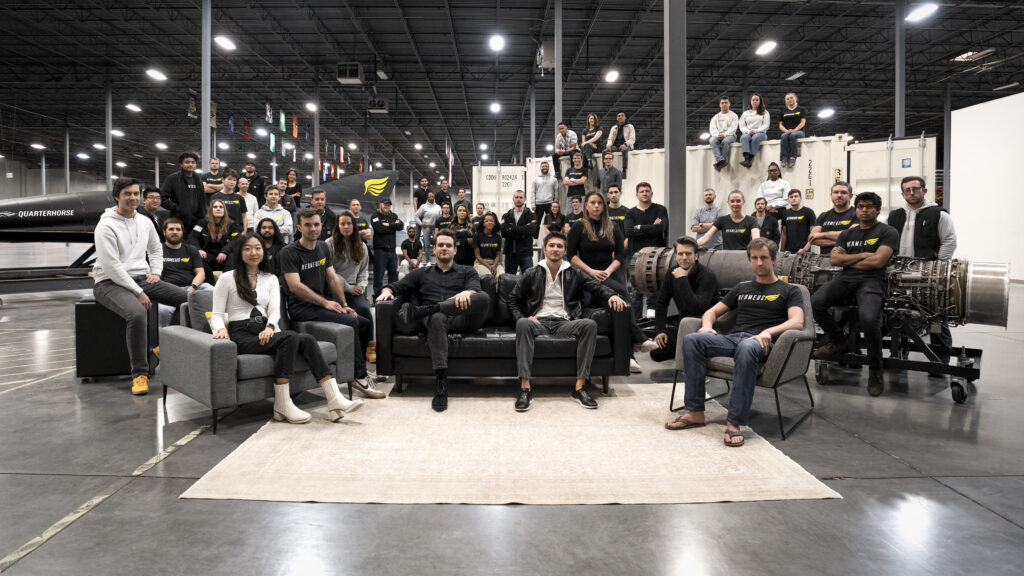
Life at Hermeus
Today, Hermeus has more than 200 employees across three different locations in Atlanta, Los Angeles, and Washington D.C. The team is composed of world-class talent, including experts from startups, leading airplane manufacturers, top defense contractors, and the U.S. military.
Hermeus is actively growing and regularly sharing updates with the world. Follow Hermeus on all major social media channels including YouTube, X, and LinkedIn.

